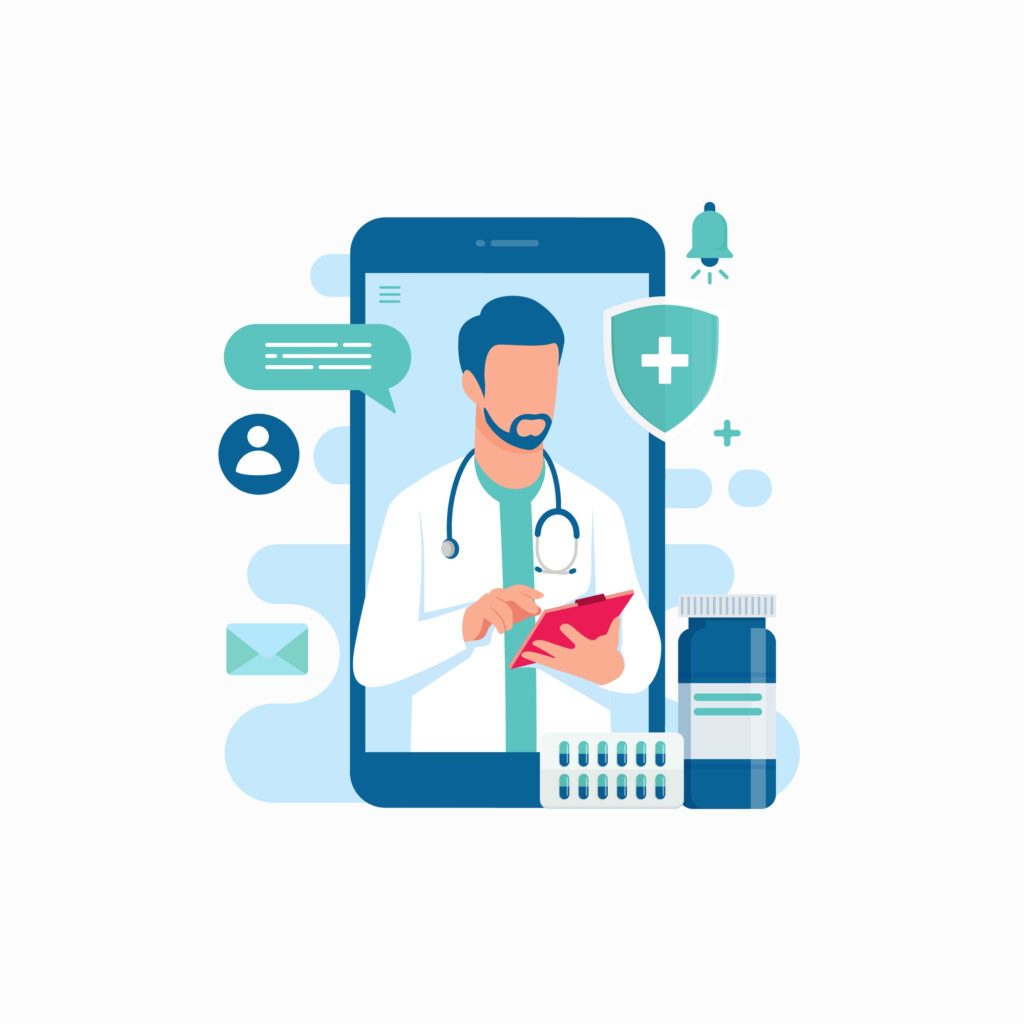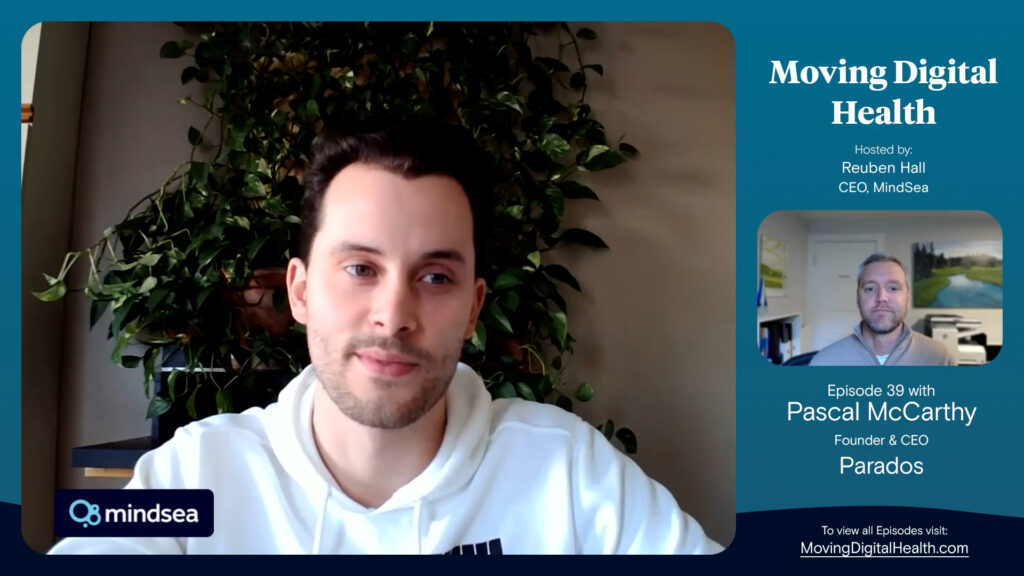We’ve written extensively on balancing patient/physician needs in app design. But what about specifically developing apps for doctors? Here, we’ll focus on key strategies for conceiving, designing, and prototyping digital health apps meant to serve clinicians.
Because our unique MindSea process is grounded in human-centered design, everything we do is informed by a rich and comprehensive understanding of the individuals served by the apps we help create. As a result, the core concepts of HCD are easily applicable to development for user groups other than physicians as well.
Four types of clinician-focused Apps
A major study by Manhattan Research and Google examining physician channel adoption found doctors spent 38% of their smartphone usage interacting with professional apps—second only to time spent searching for information, at 48%. And among medical school students and staff, 85% reported daily use of a mobile device for clinical purposes.
Even as the number of digital health Apps increases exponentially, mobile apps targeted at physicians can usually be categorized into four groups according to the main purpose of the app:
- Clinical reference apps connect physicians with information to aid in diagnosis and treatment, such as:
- Reference material
- Clinical support and treatment guidelines
- Diagnostic tools, such as a drug interaction checker or dosing calculators
- Medical literature and news
- Patient data and/or patient communication apps can connect physicians to patient data for remote monitoring, or even directly to the patients themselves. These apps can improve the doctor/patient relationship and, via telehealth, address care challenges due to:
- Language barriers
- Accessibility in remote or rural areas
- Practice workload, or low ratio of health care providers to the patient population
- Professional collaboration apps connect physicians with each other to expand their own clinical understanding. These types of apps offer:
- Engagement with a community of healthcare professionals
- The ability to securely share anonymized medical information
- The chance to discuss and learn from rare or unusual cases
- Workflow apps help physicians streamline clinical workflow to allow more time with patients by managing information and of time. Some examples:
- Prescriptions, lab results, specialist referrals
- Scheduling and calendar maintenance
- Note-taking and notes organization

Challenges to building apps for physicians
When it comes to user adoption, doctors can be a cautious group—and their training quite rightly makes them so. Because patient safety is paramount, many physicians have ongoing concerns about app reliability, accuracy, privacy, and oversight, especially given the sheer number of health apps on the market and their variance in quality.
One key concern among physicians is the potential lack of oversight regarding app content. For example, a medical reference app that isn’t up-to-date and strictly accurate could compromise decision-making around diagnosis or treatment. Simply put, when it comes to standards of quality, reliability, and accuracy, the bar is higher for medical apps because the stakes are higher.
In addition to questions about patient data protection and the ethical or legal implications of app use, physicians also wonder about the impact of digital health apps on doctor/patient relationships, as well as upon the healthcare workplace itself.
Misunderstanding of clinical pain points and user needs is another example of where physician-focused apps can go awry, as are poor usability and failure to align with privacy and security regulations, such as an app messaging feature that isn’t HIPAA-compliant.
Finally, another contributing factor impeding user adoption among clinicians might be generational uncertainty about digital health technology itself. Some doctors may feel a lack of confidence using mobile apps: an obstacle that intuitive human-centered design can help mitigate.
Here are several points of guidance toward developing useful, engaging, and high-quality health apps for physicians:
Step 1: Fully understand the problem
Successful apps identify and solve a problem, all without creating new problems. Gathering information and input from multiple stakeholders is essential for this step. Knowing your user and speaking to their needs requires understanding of which app features really matter and why, as well as how your intended audience will utilize those features.
Step 2: Solve the problem comprehensively
Building knowledgeably means developing an app sufficiently flexible to be adapted to future needs, and which is secure, up-to-date, and fully compliant. Because the nature of the data exchanged and/or contained within a digital health app is so consequential, taking care to fully inform the build process in accordance with the latest in privacy and security can position the app for success.
Step 3: Build smart, build beautiful
Smart and beautiful design engenders trust and confidence in your audience. Maintaining your user’s perspective front-of-mind—from high-level information architecture, through wireframes and on to final designs—helps ensure your app flows intuitively and your user stays engaged and motivated.
How MindSea can help
Our award-winning team is passionate about helping create beautiful, high-functioning, integrated mobile apps that truly serve the user. Check out our blueprint process, which provides a proven path to app prototype as we work together to craft a detailed design, development, and deployment timeline.
Whether you’re designing your first app or taking your digital health product to the next level, MindSea can help elevate your digital strategy. Reach out today to learn more.



